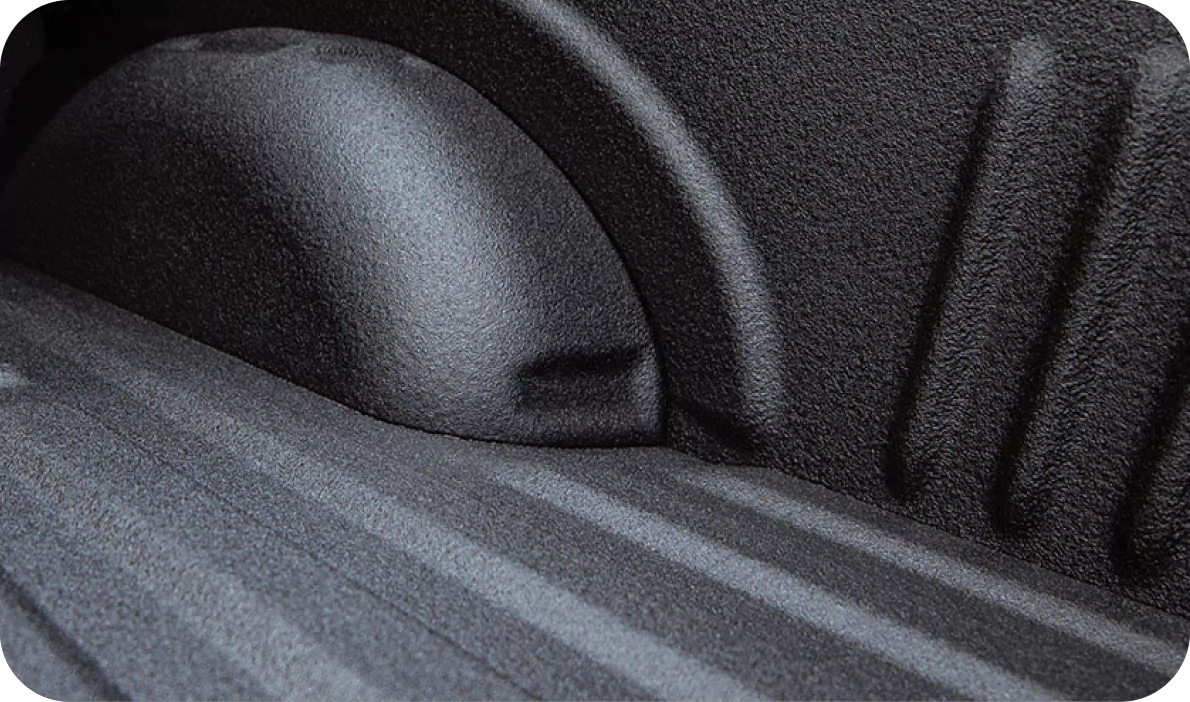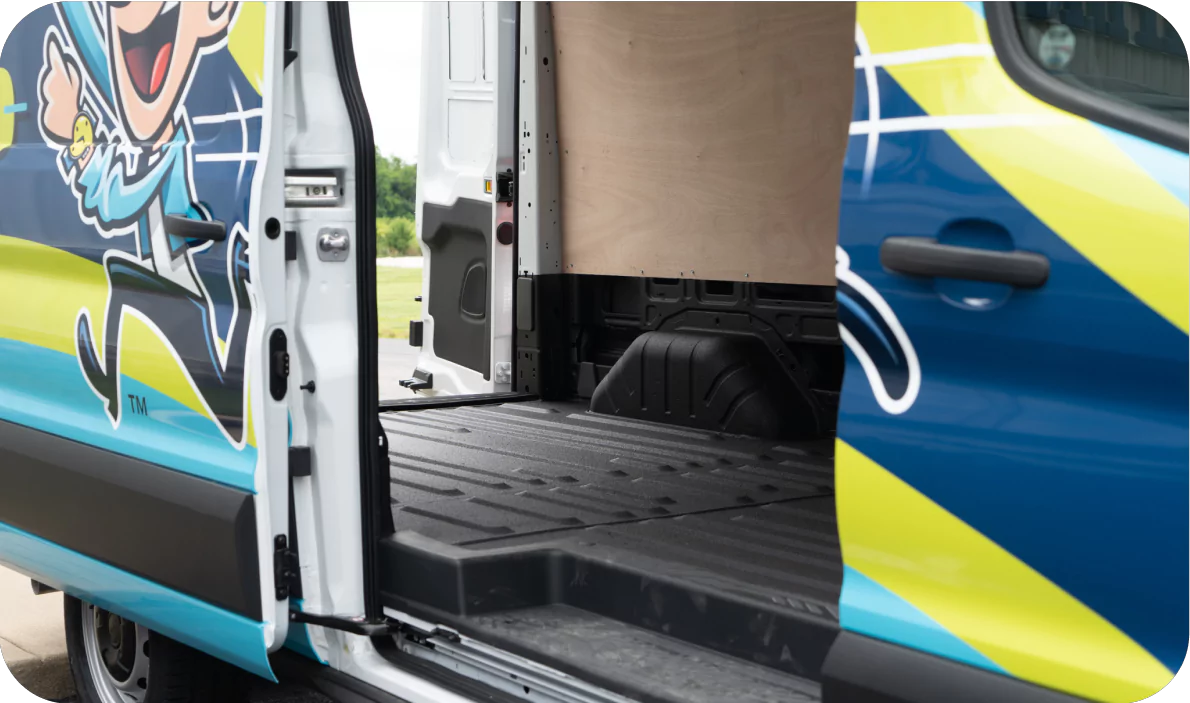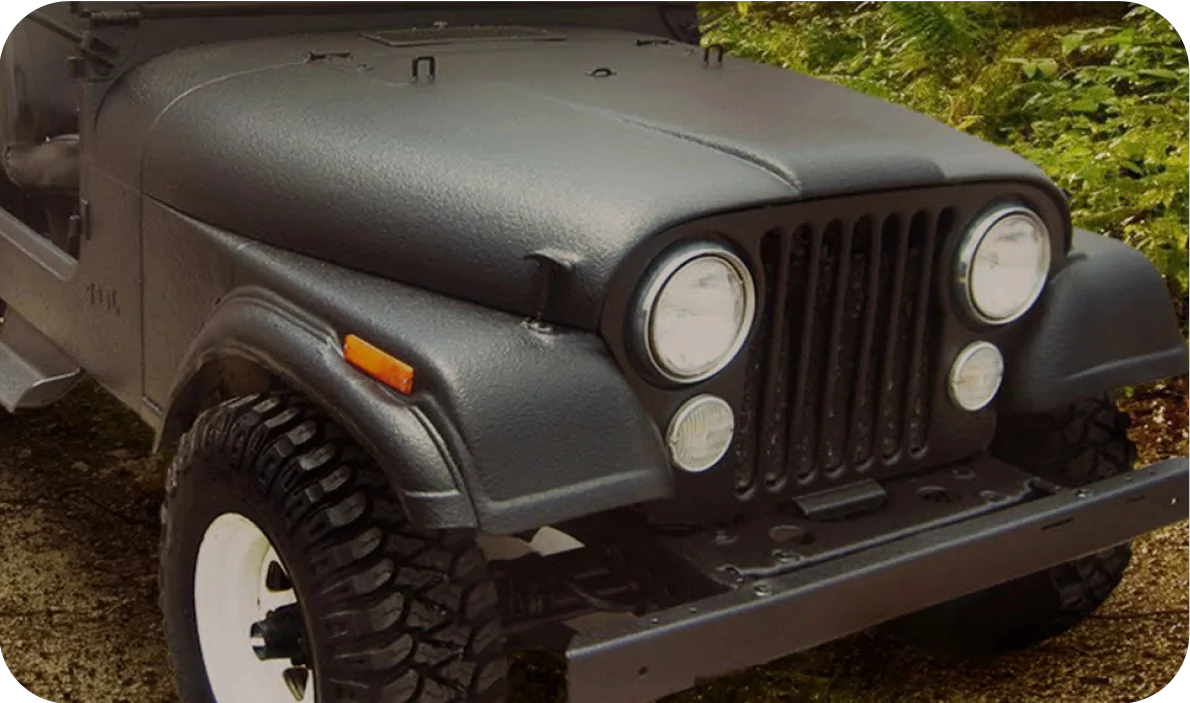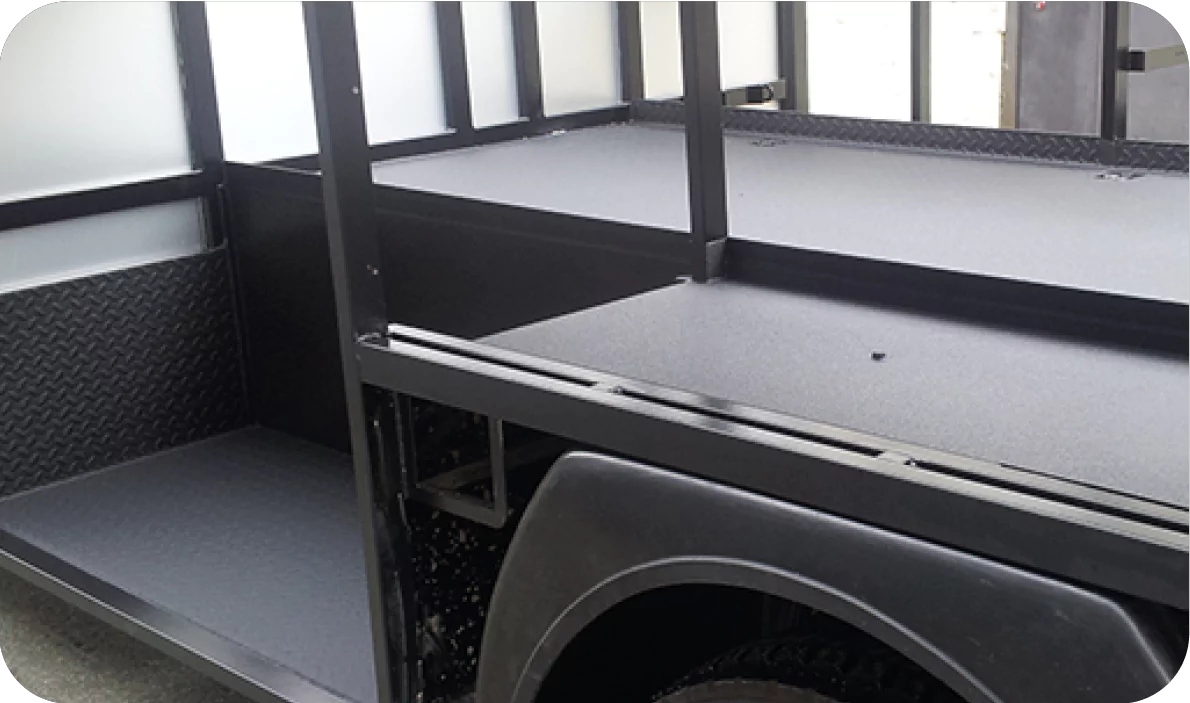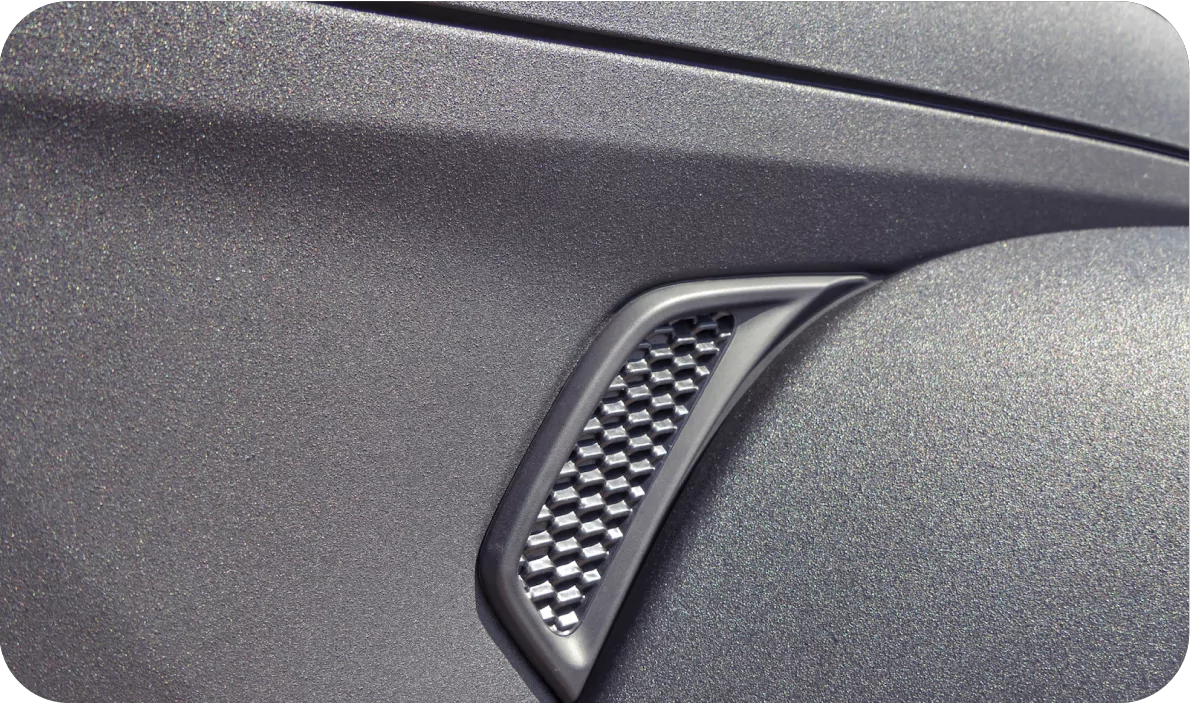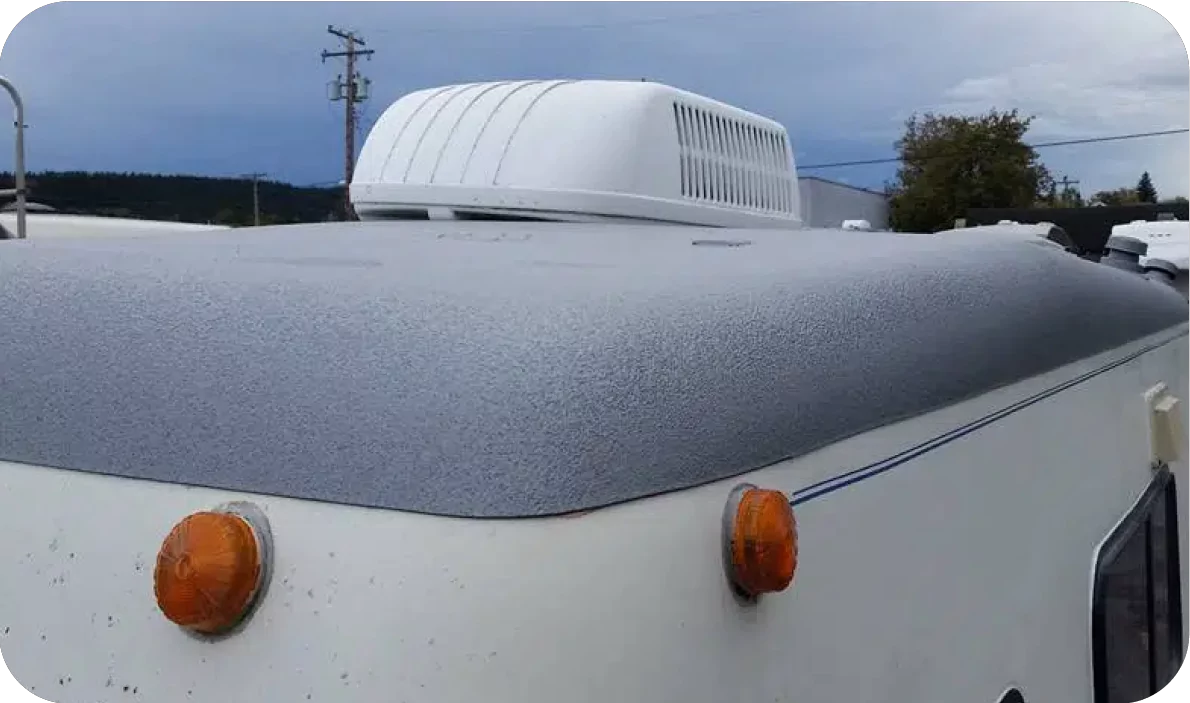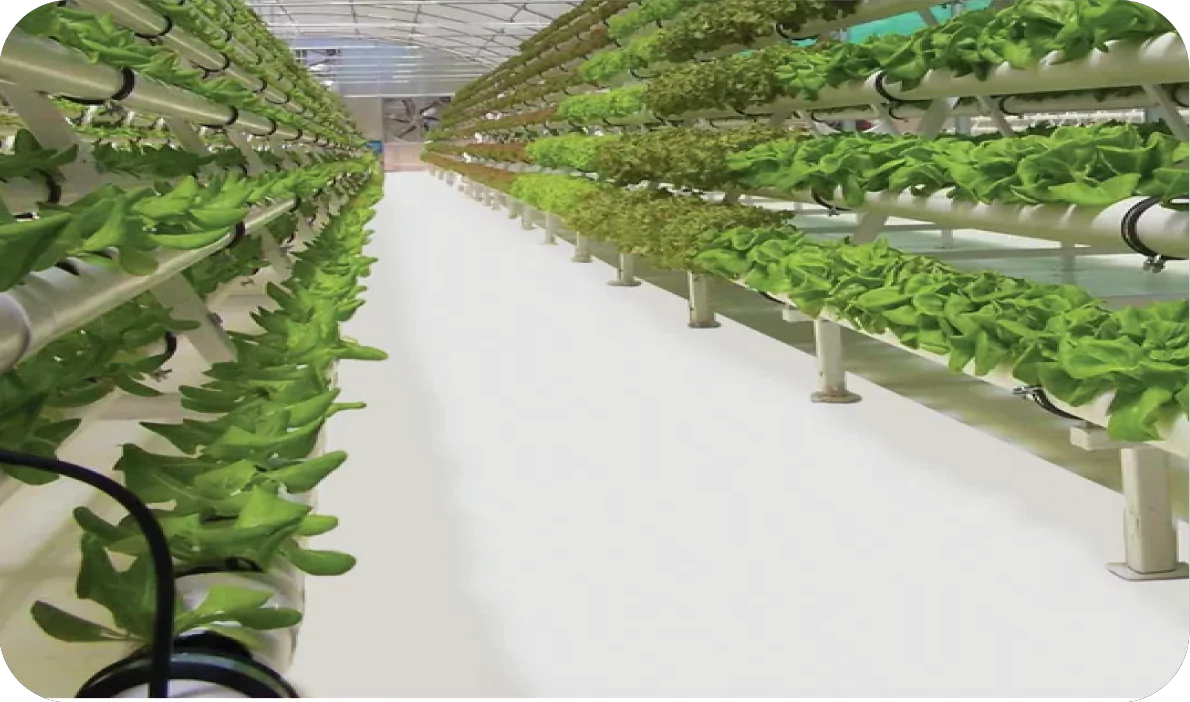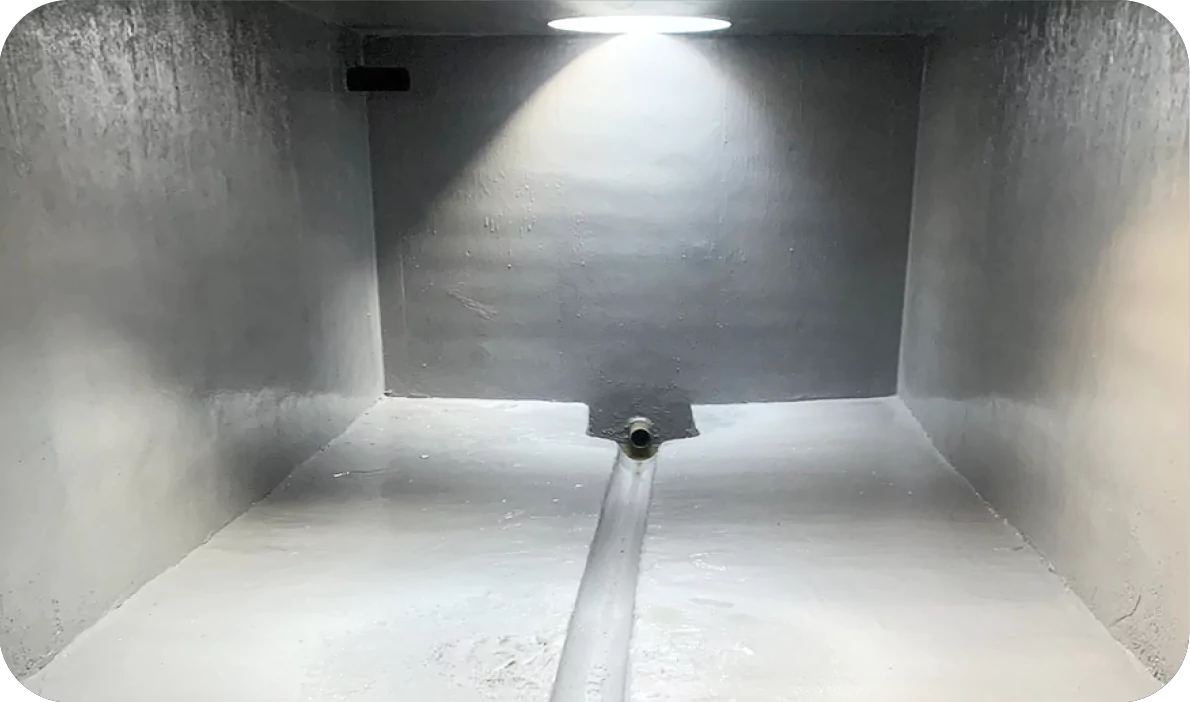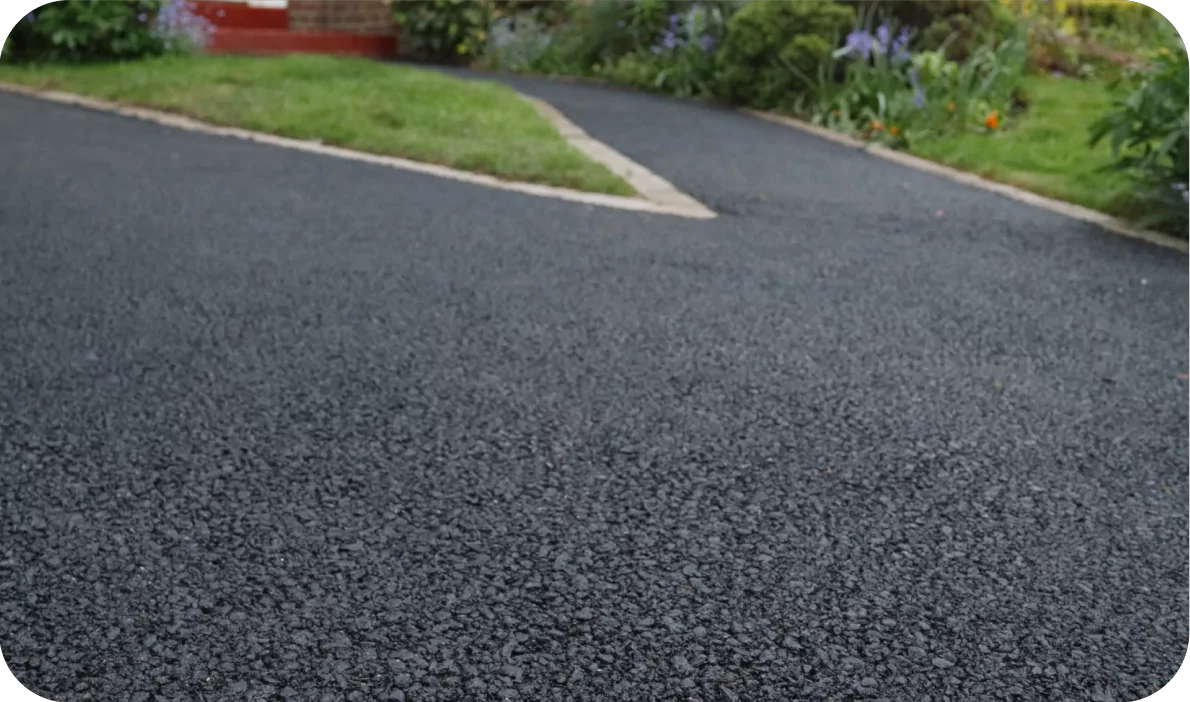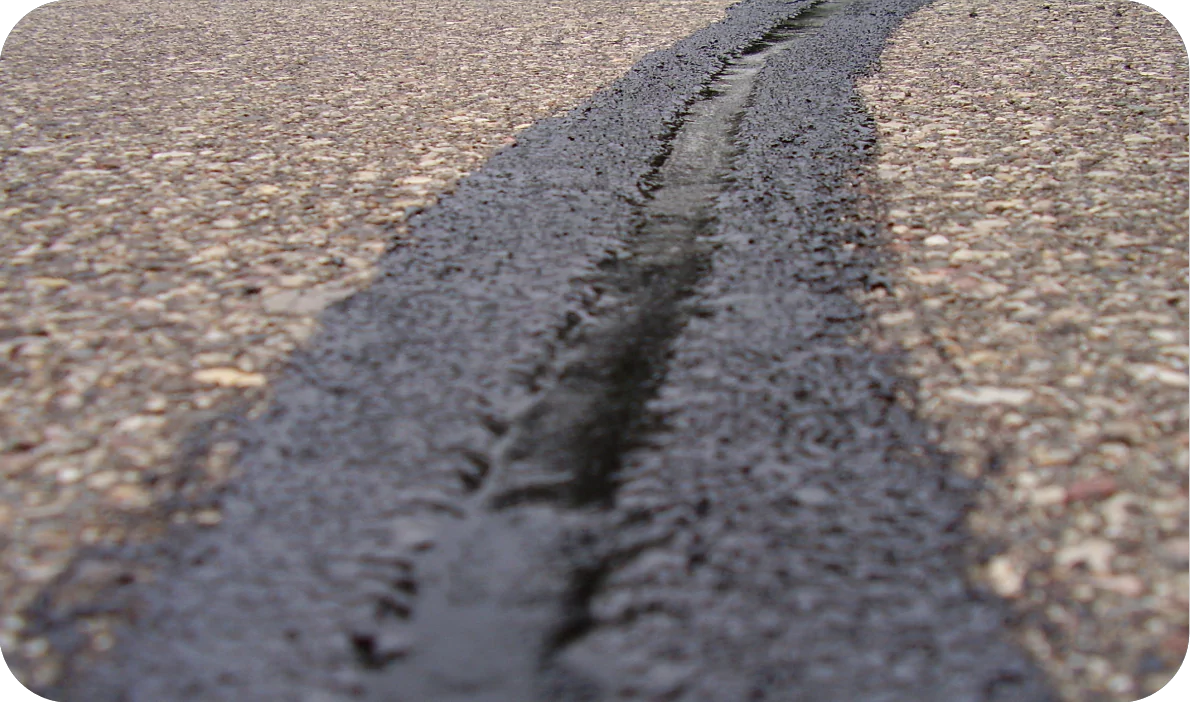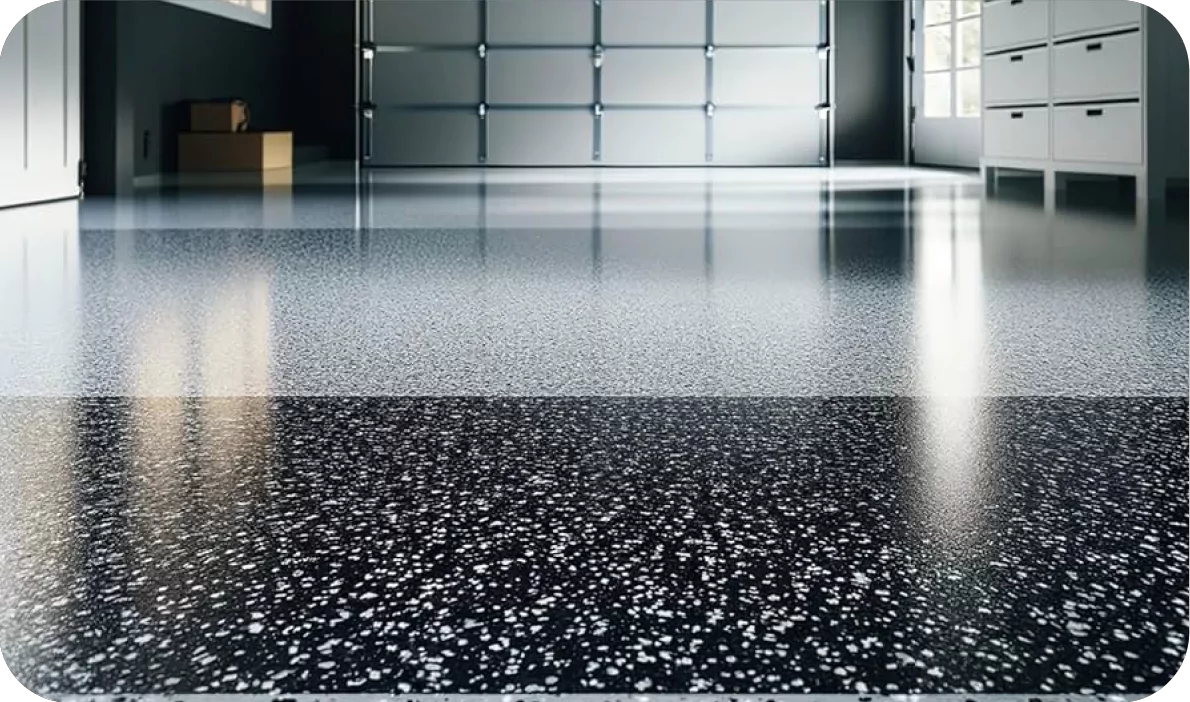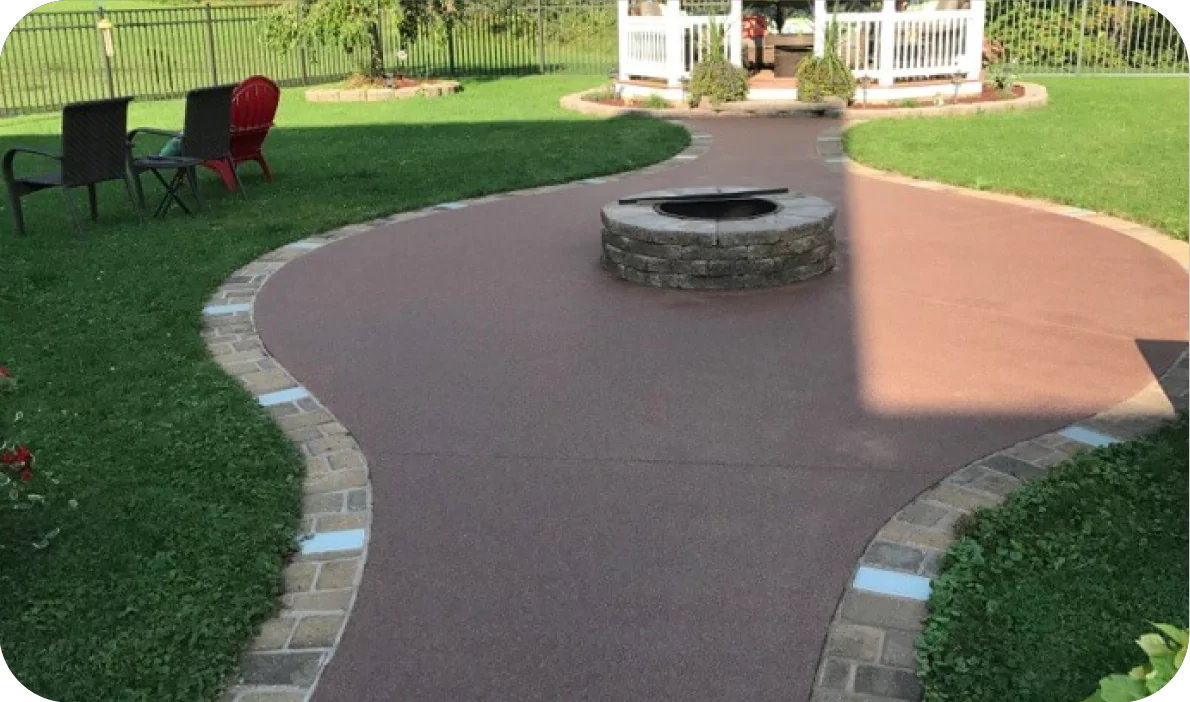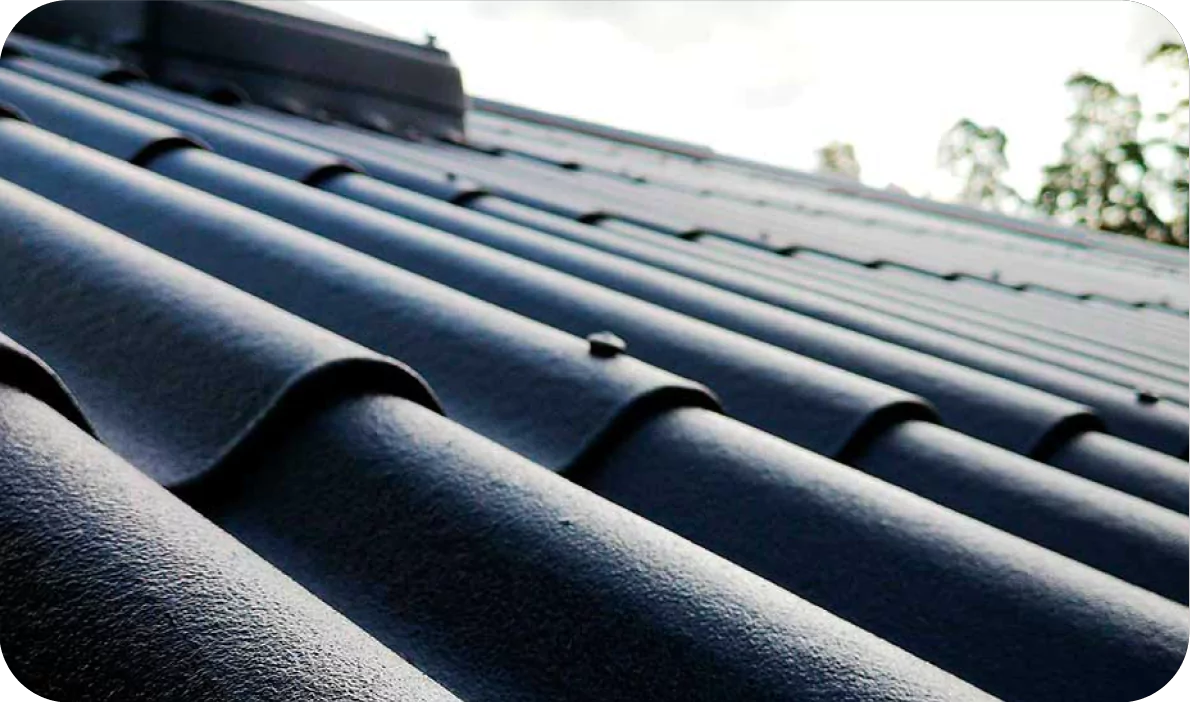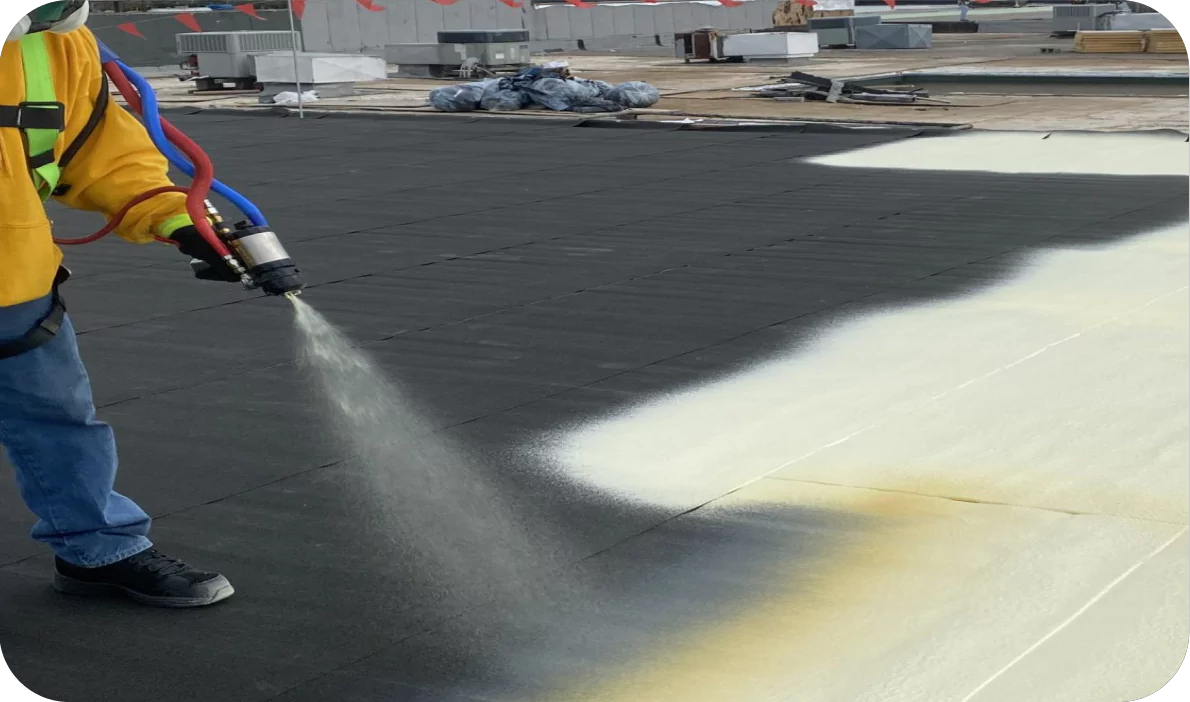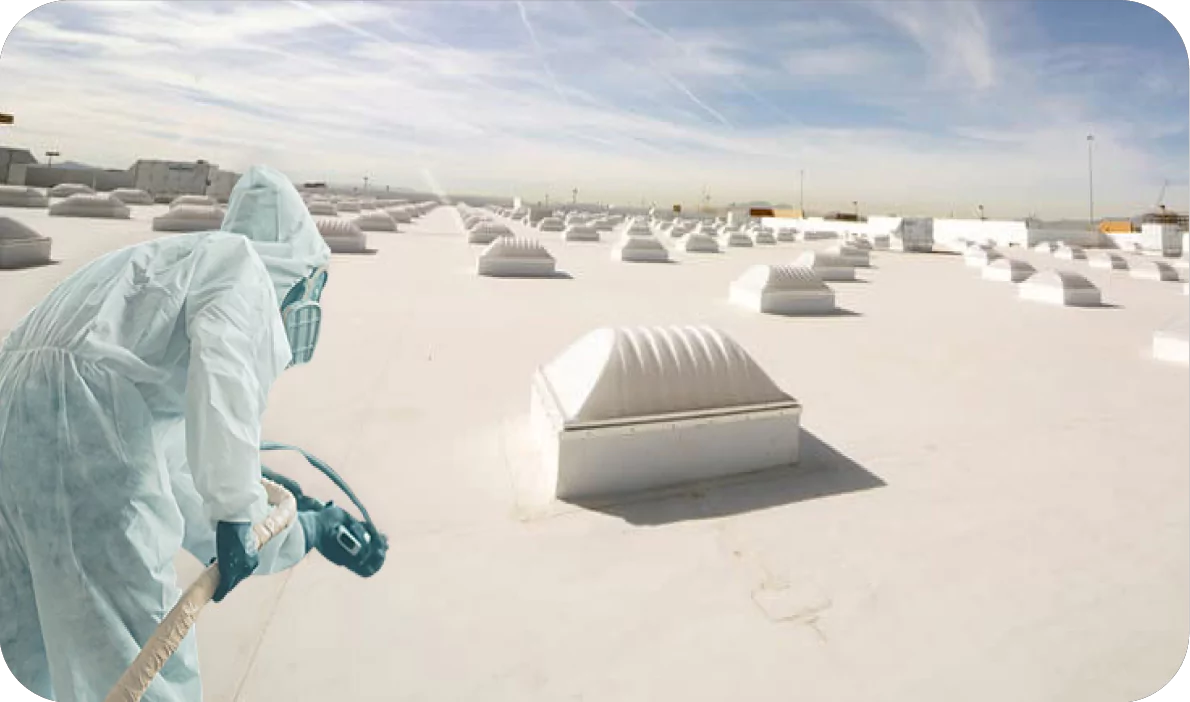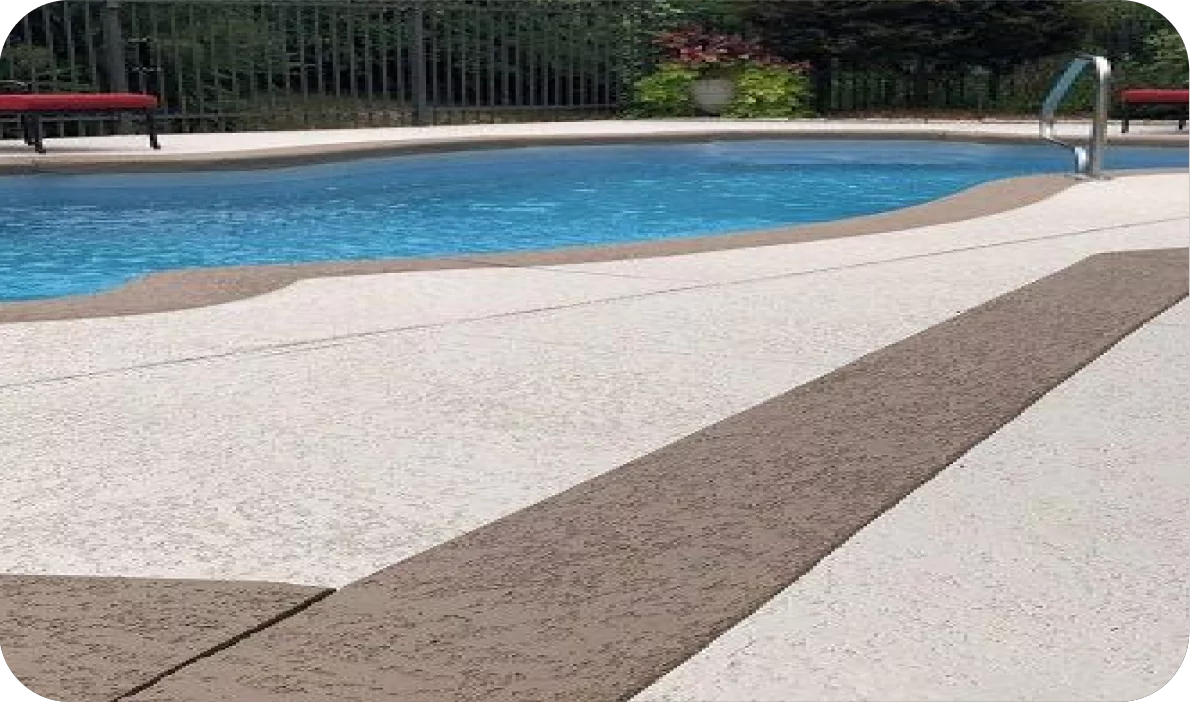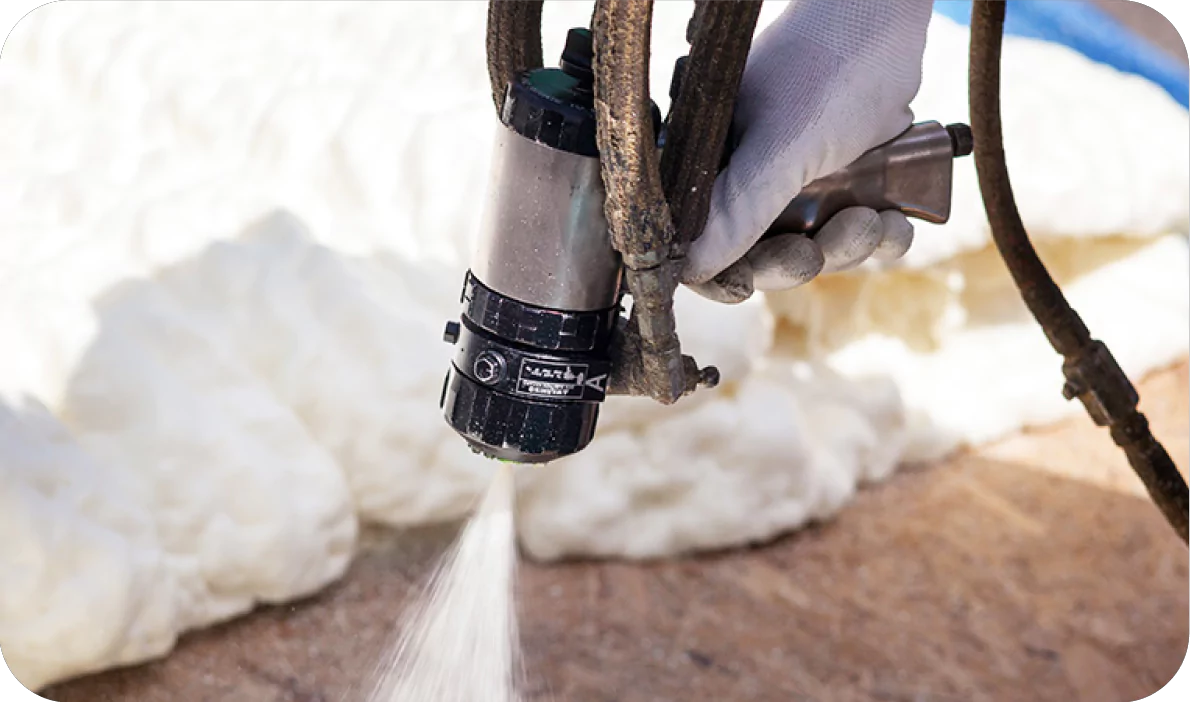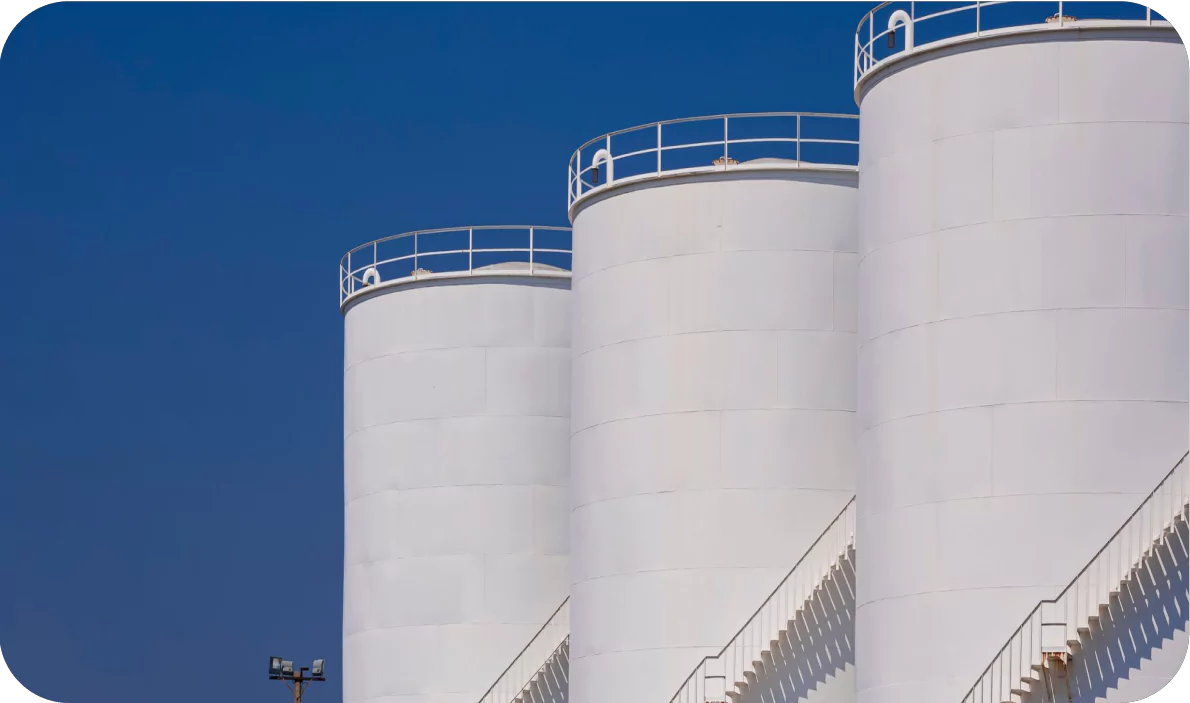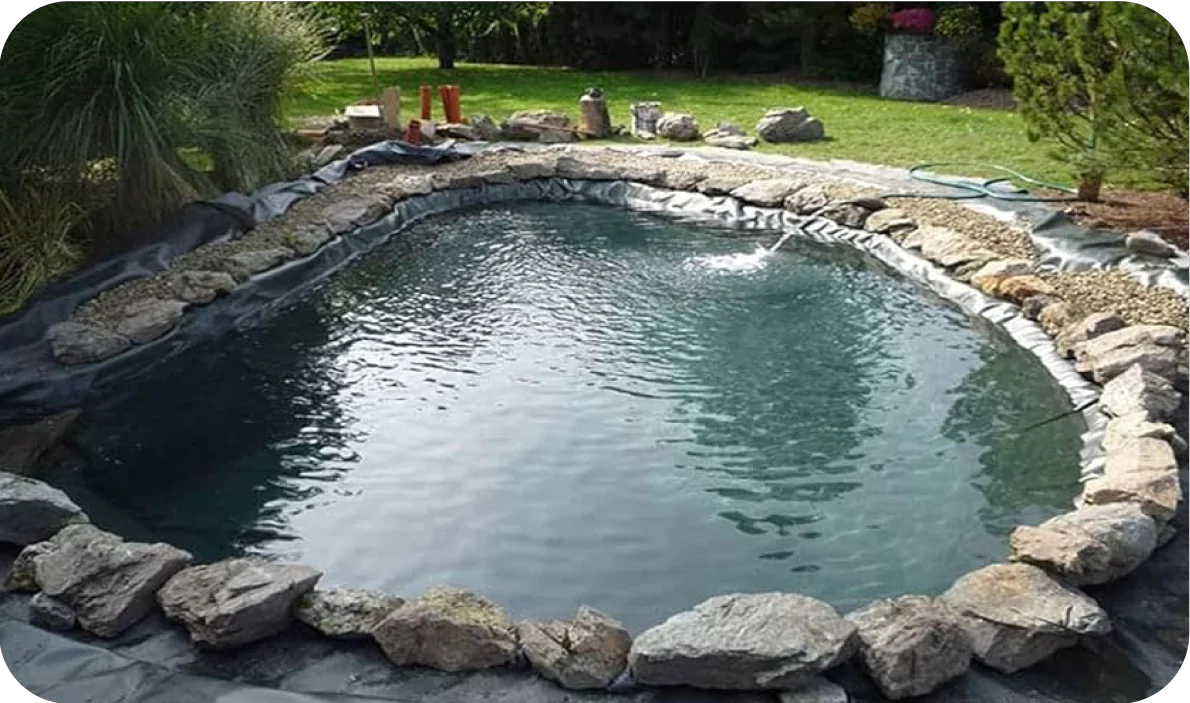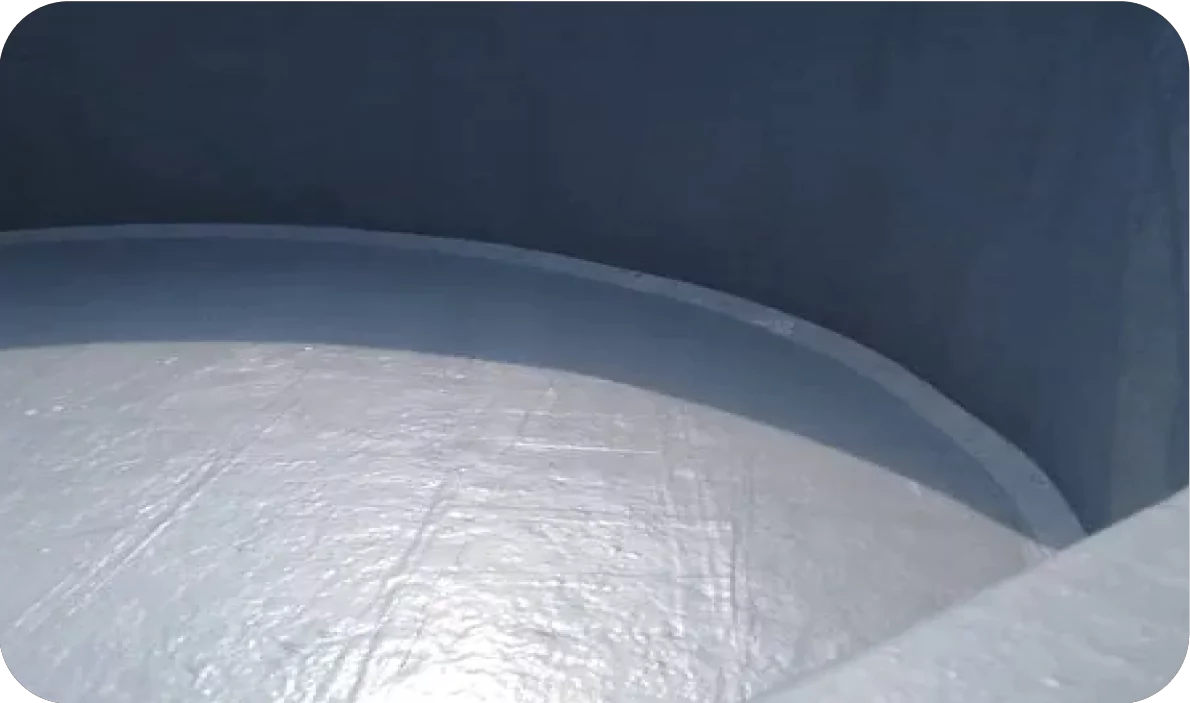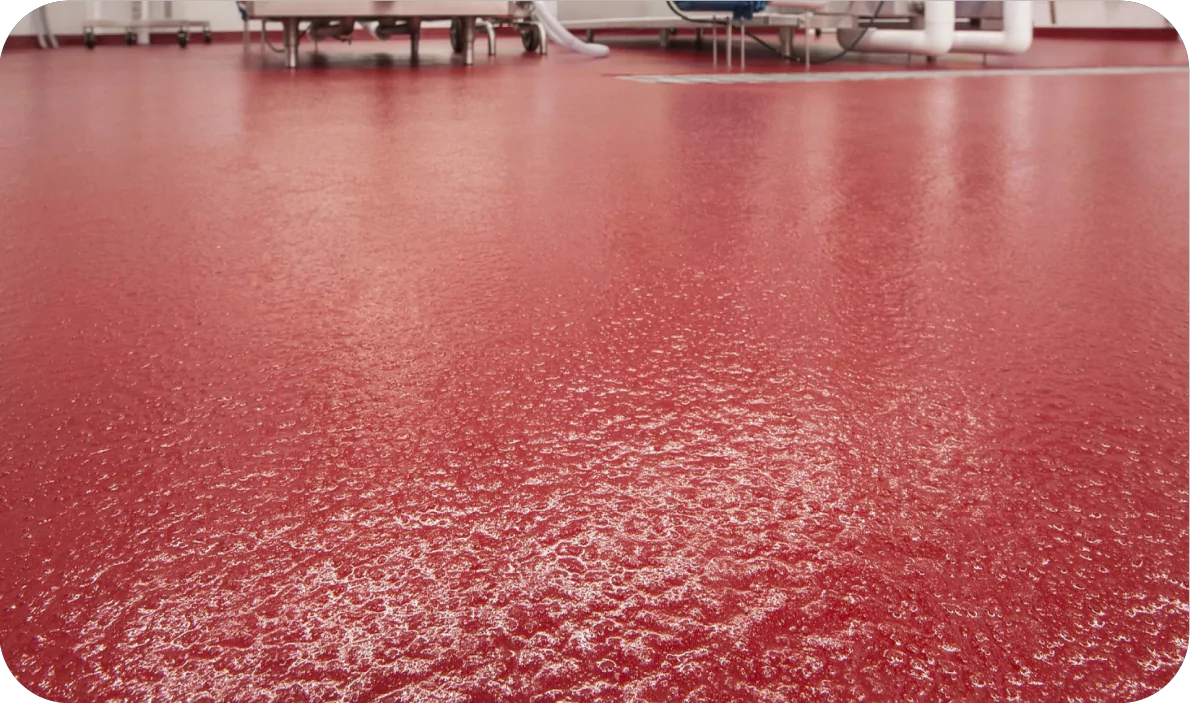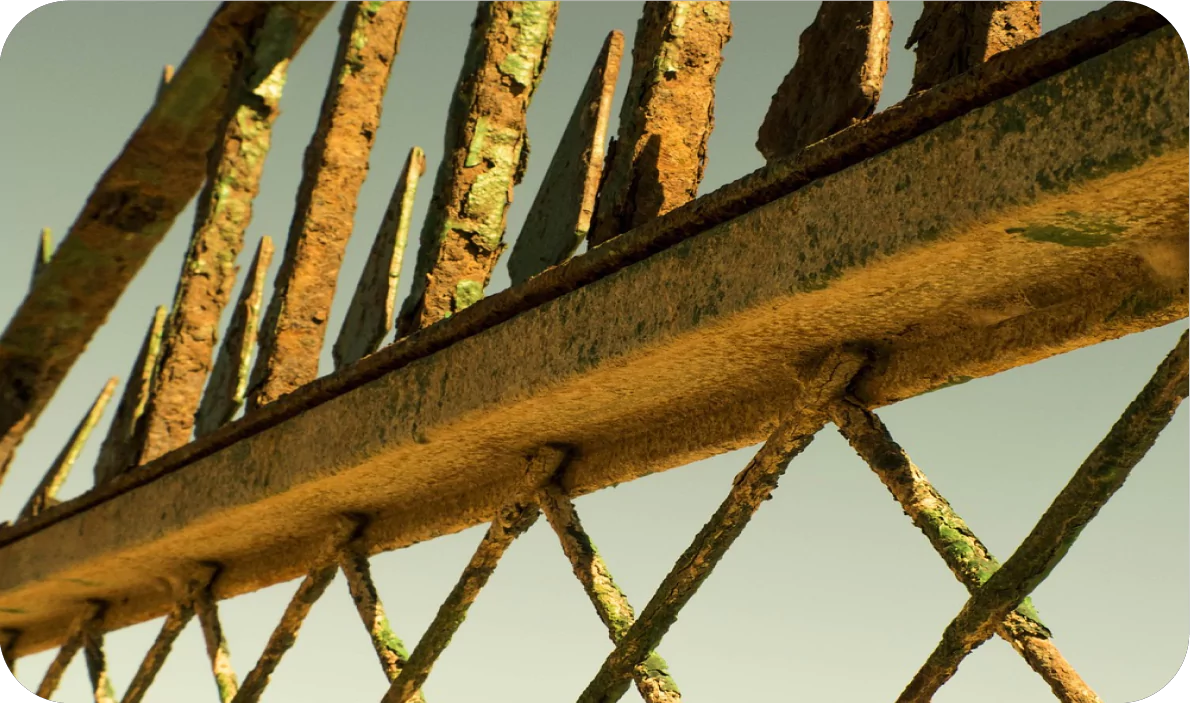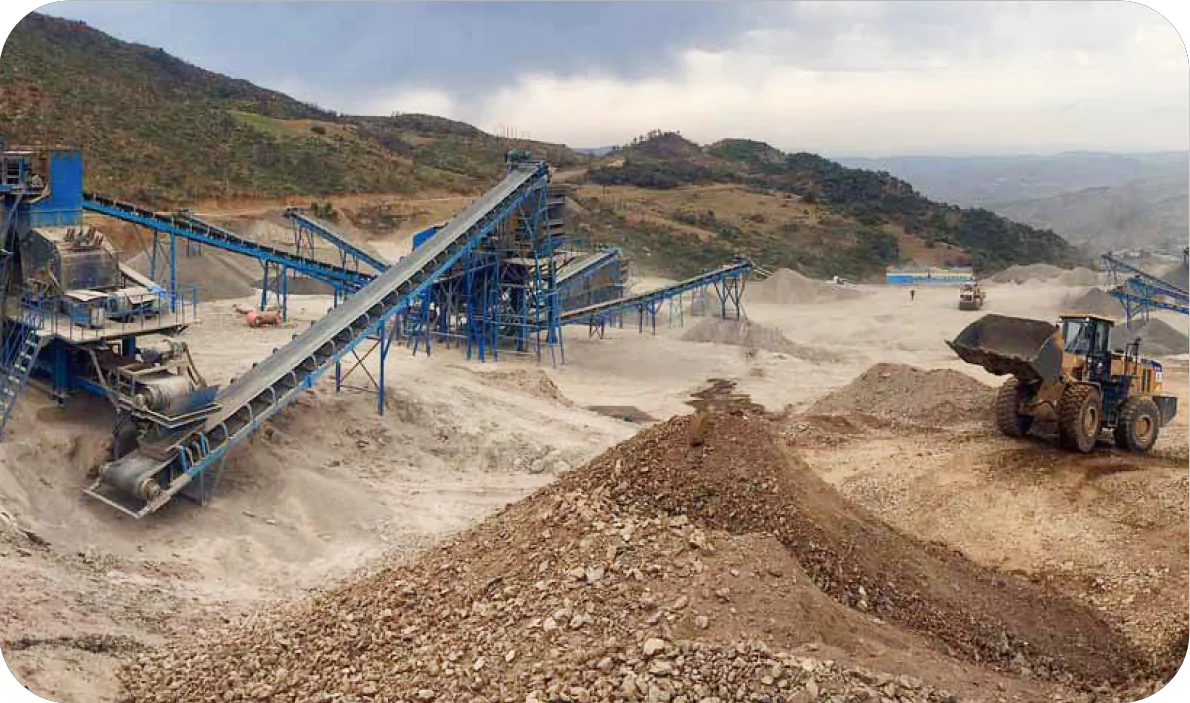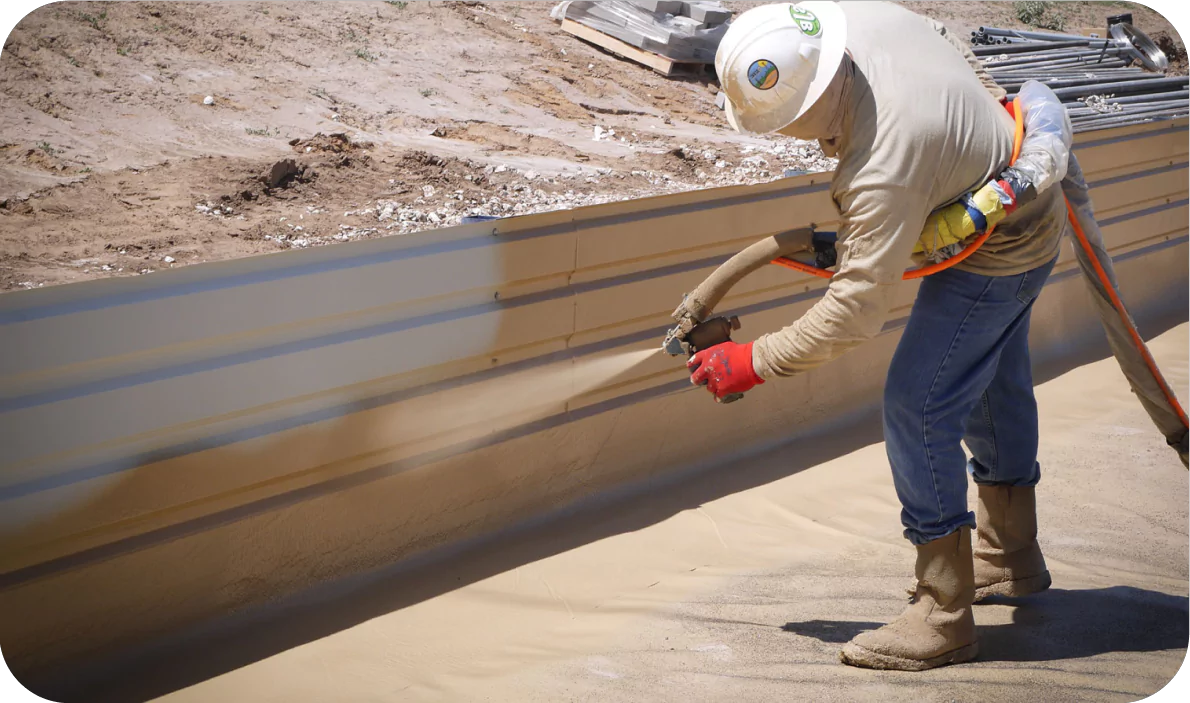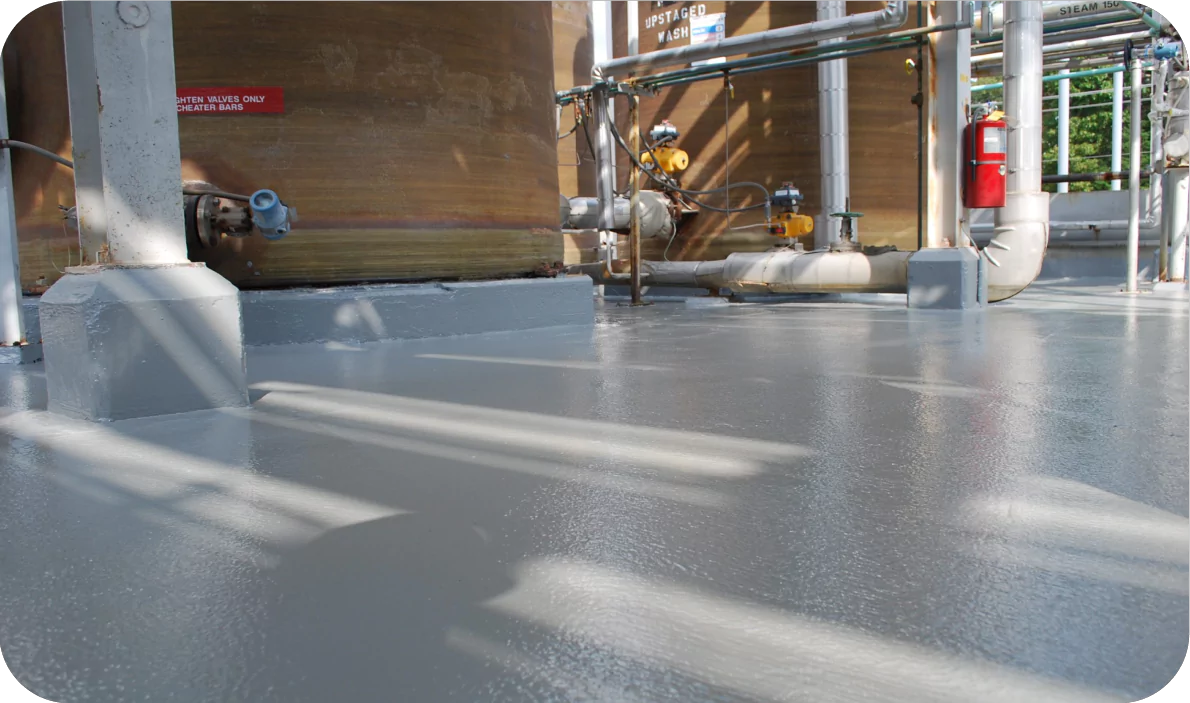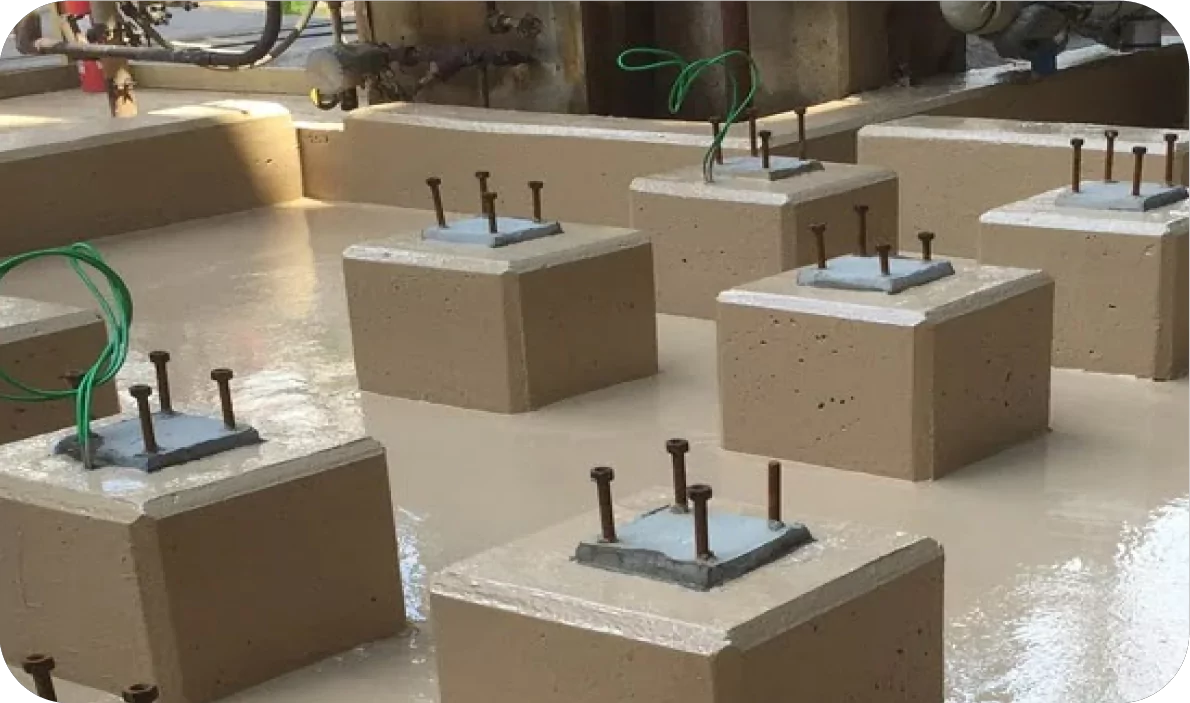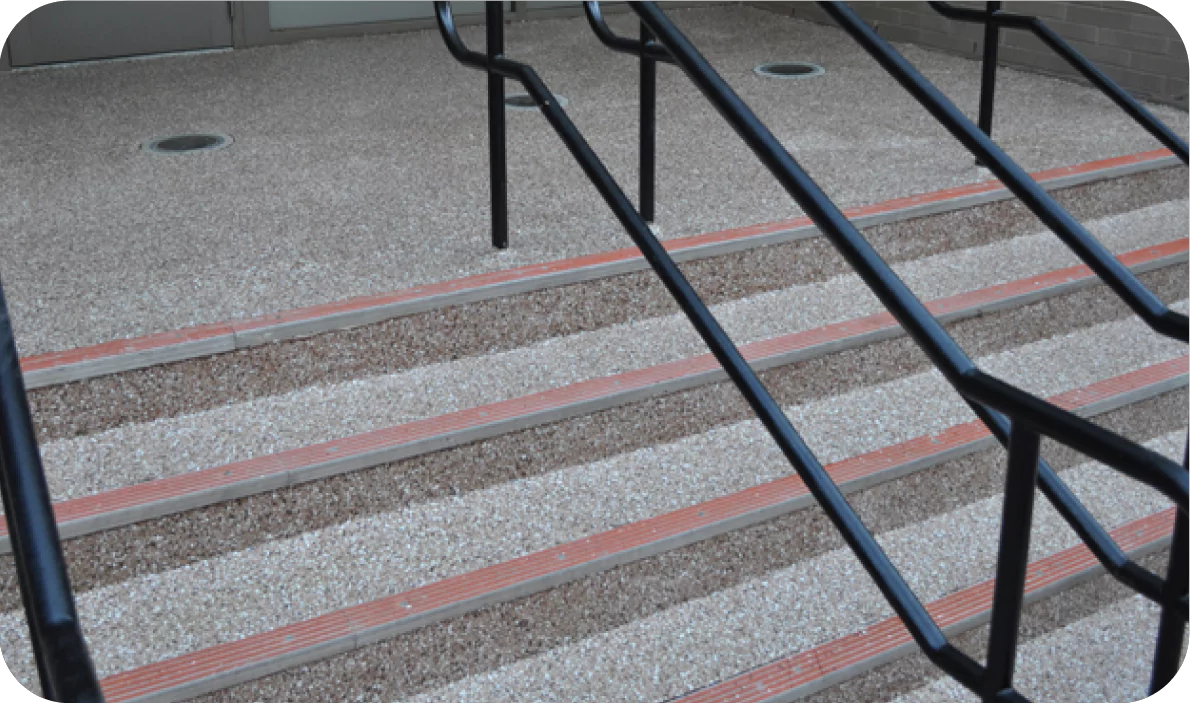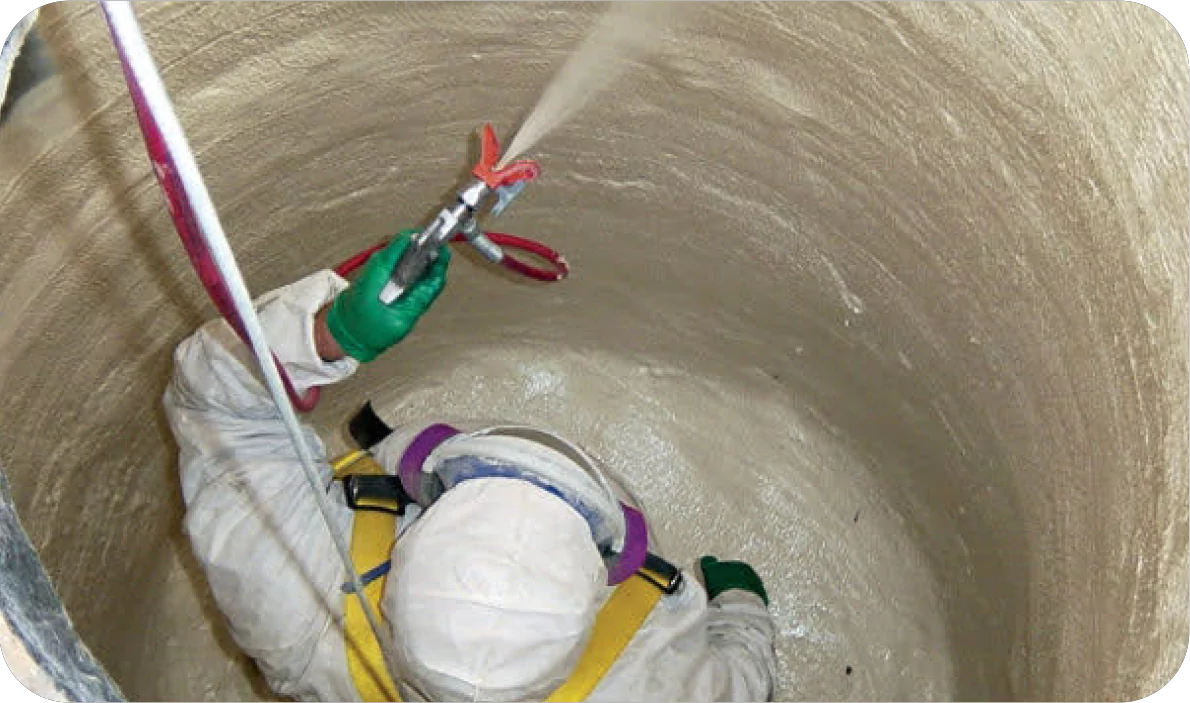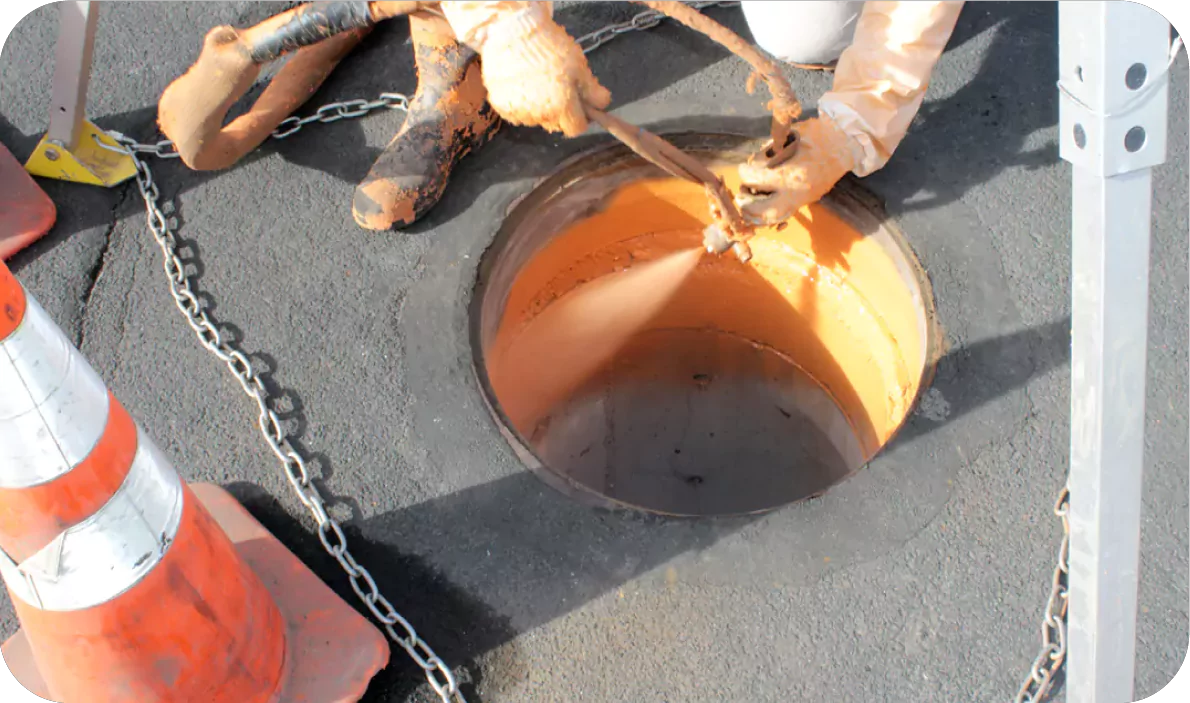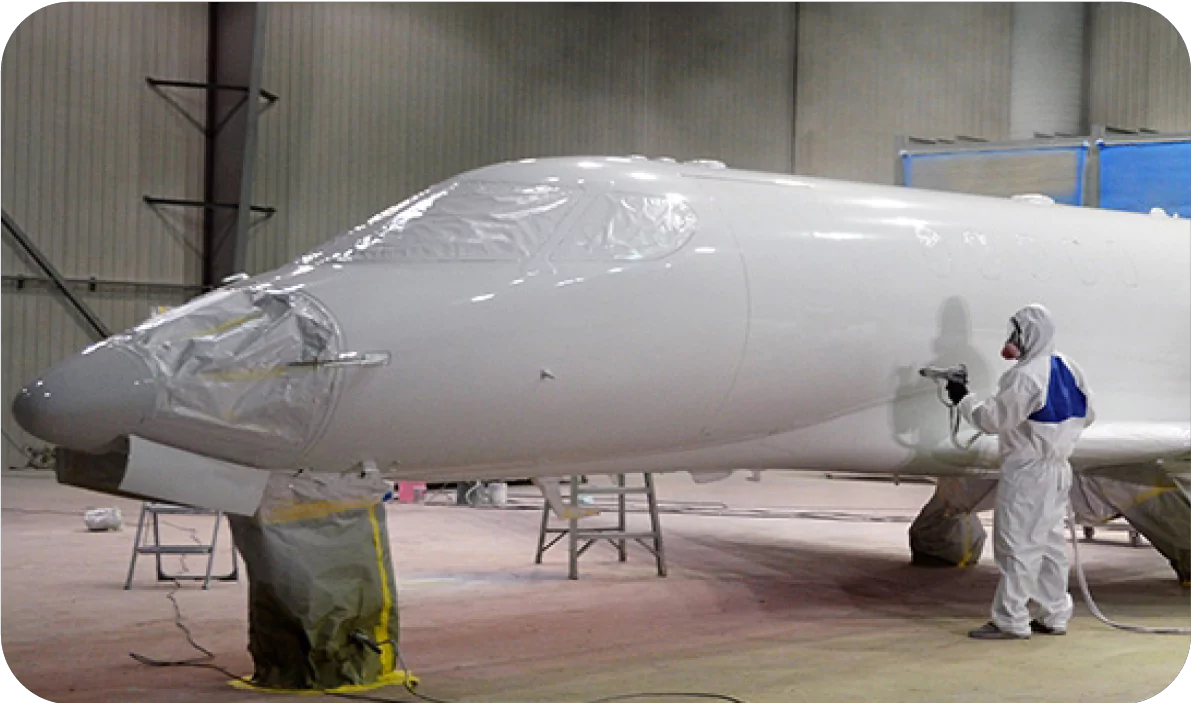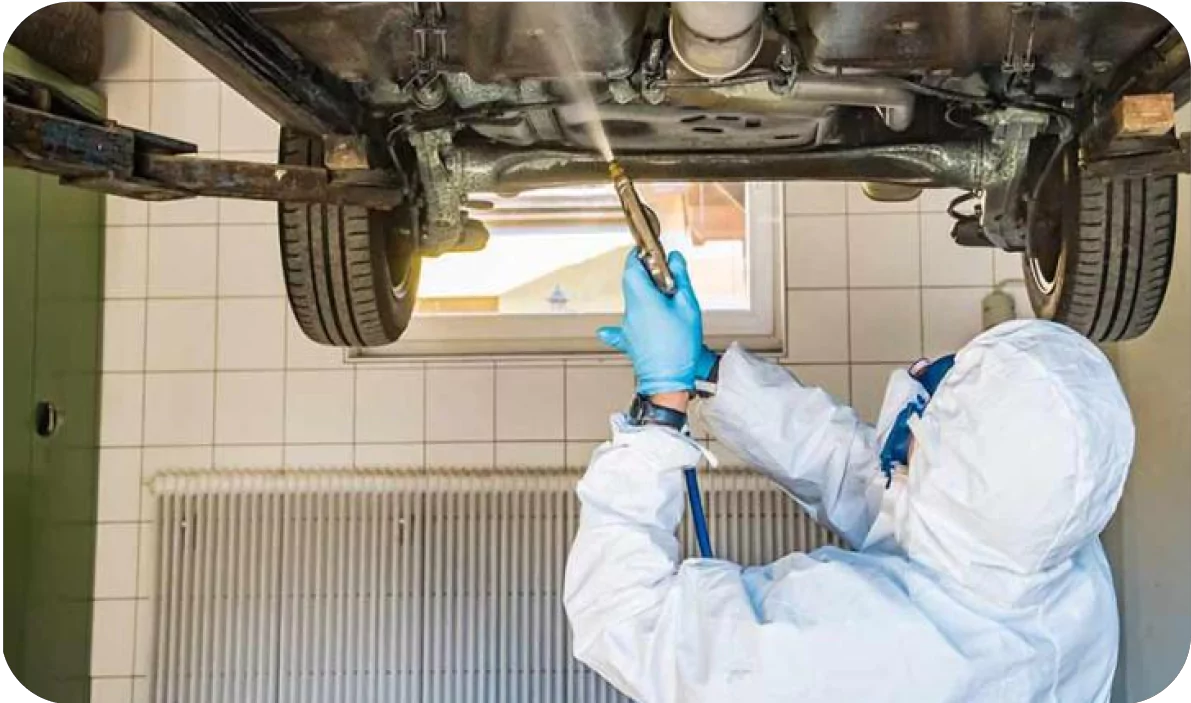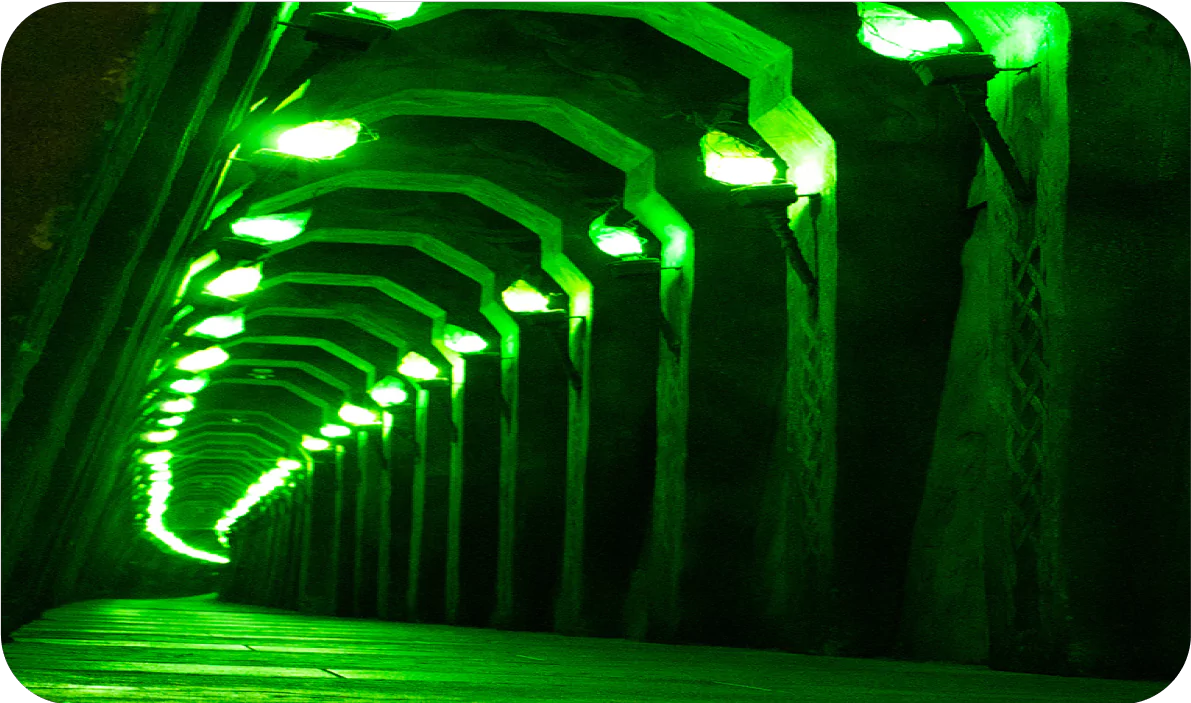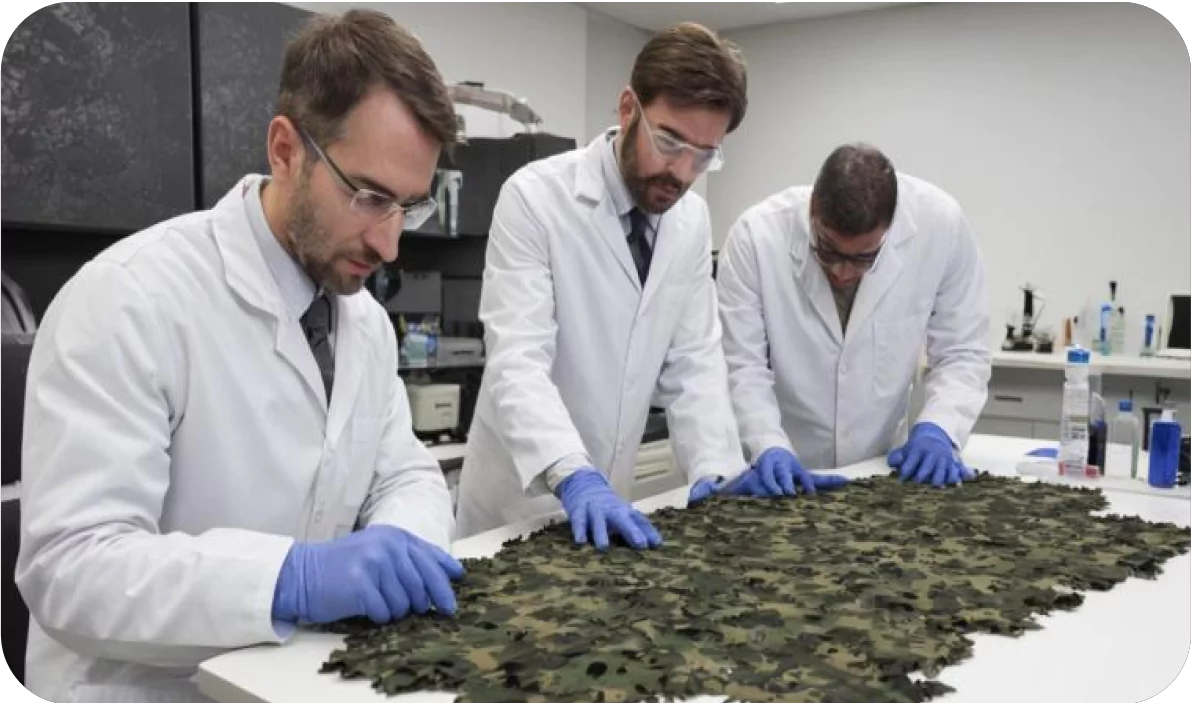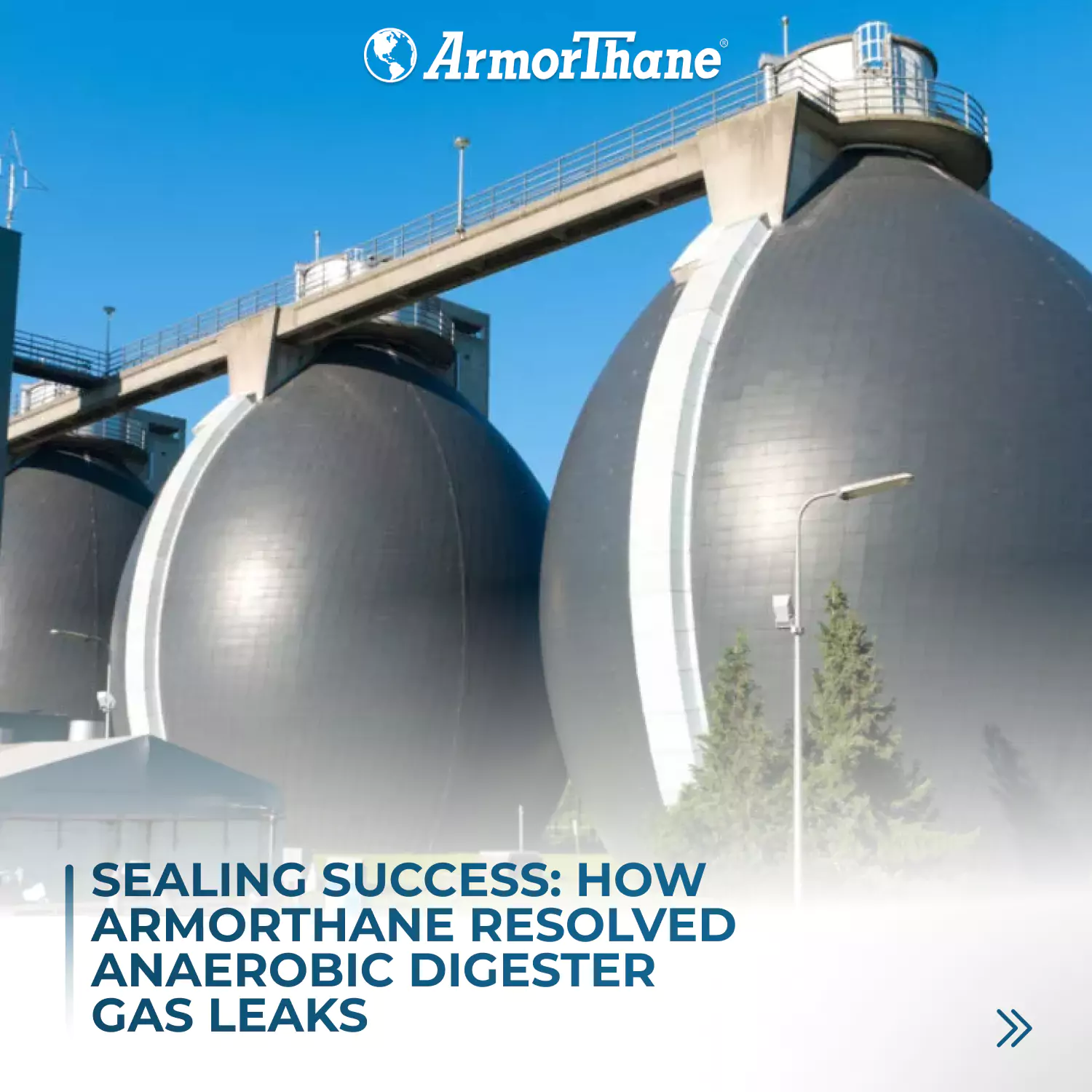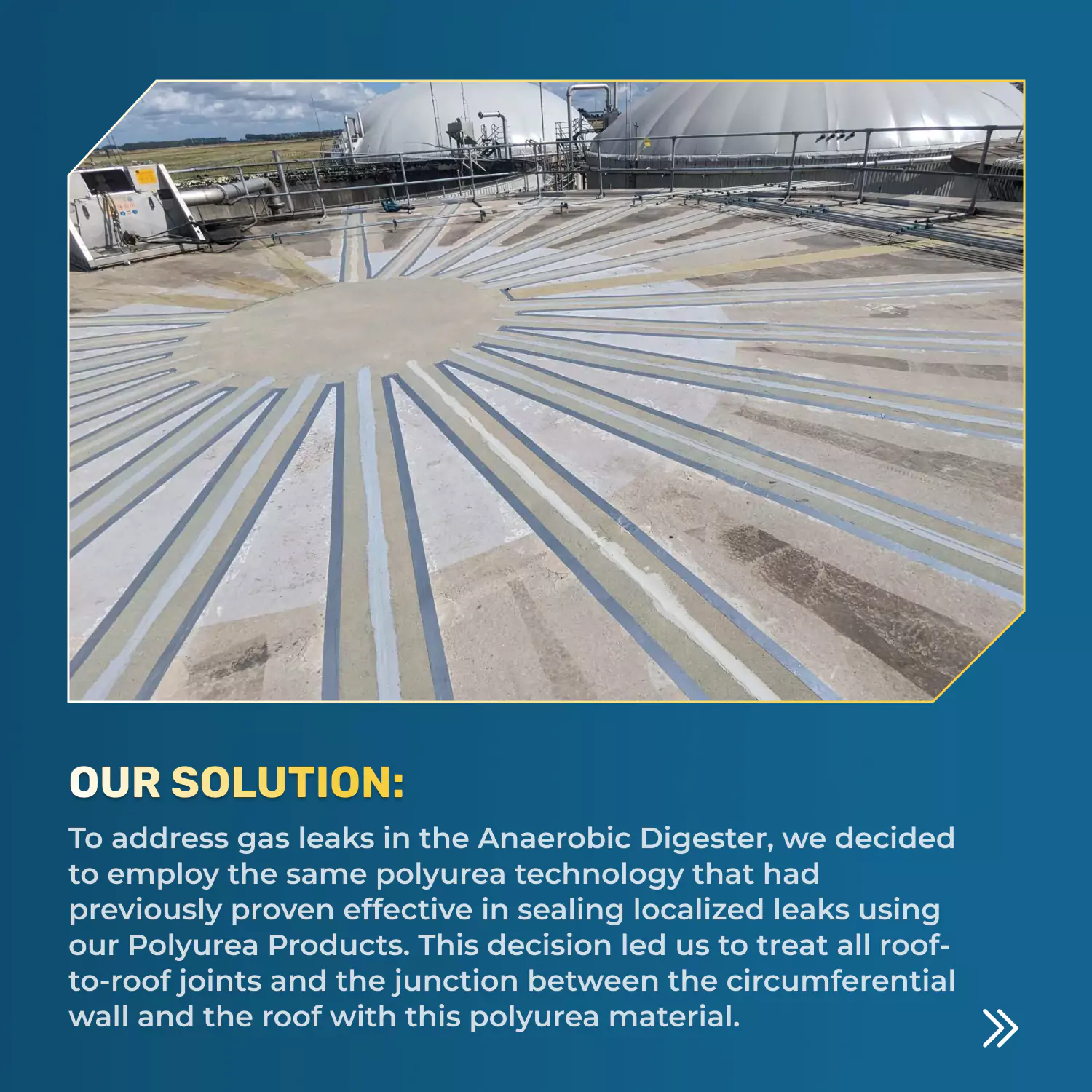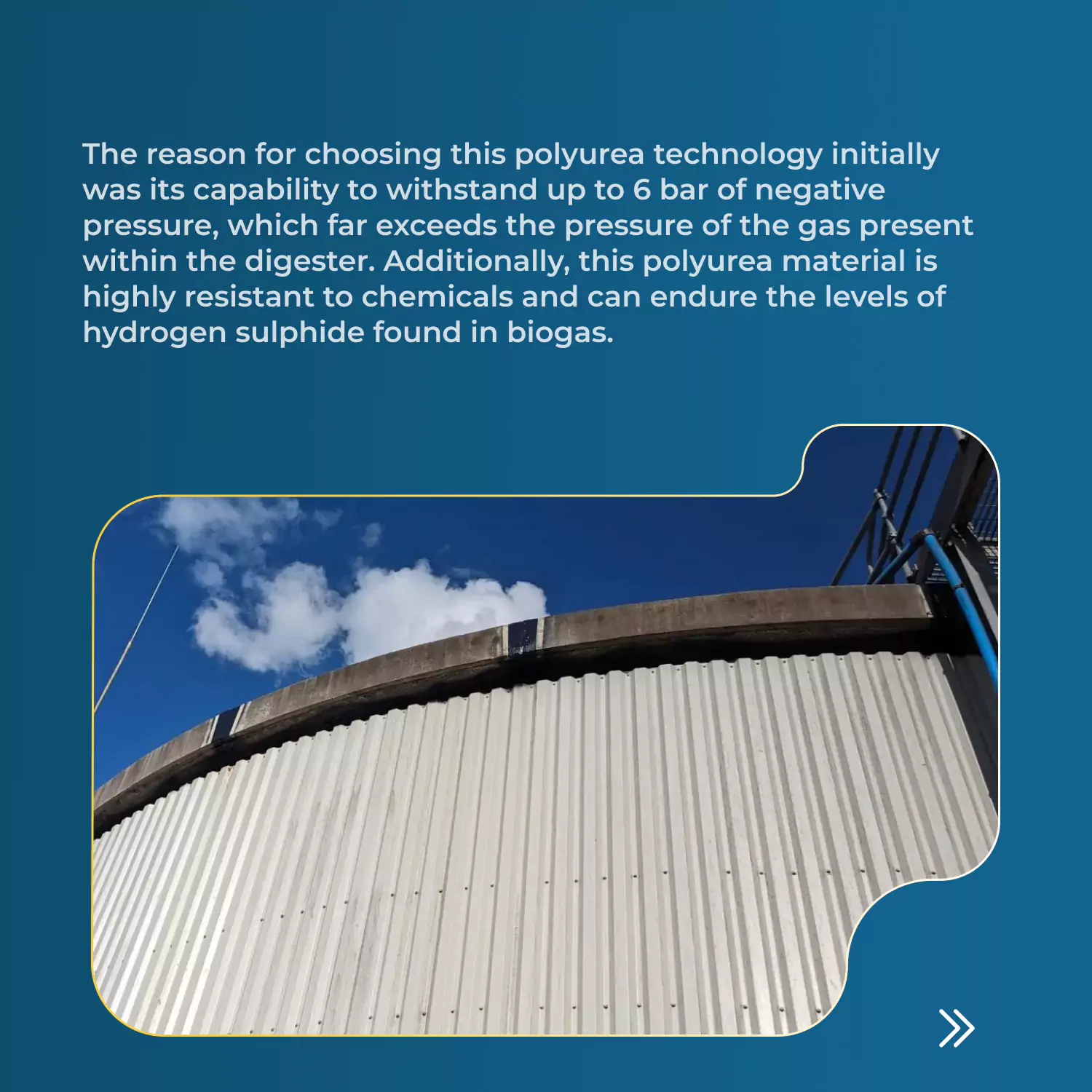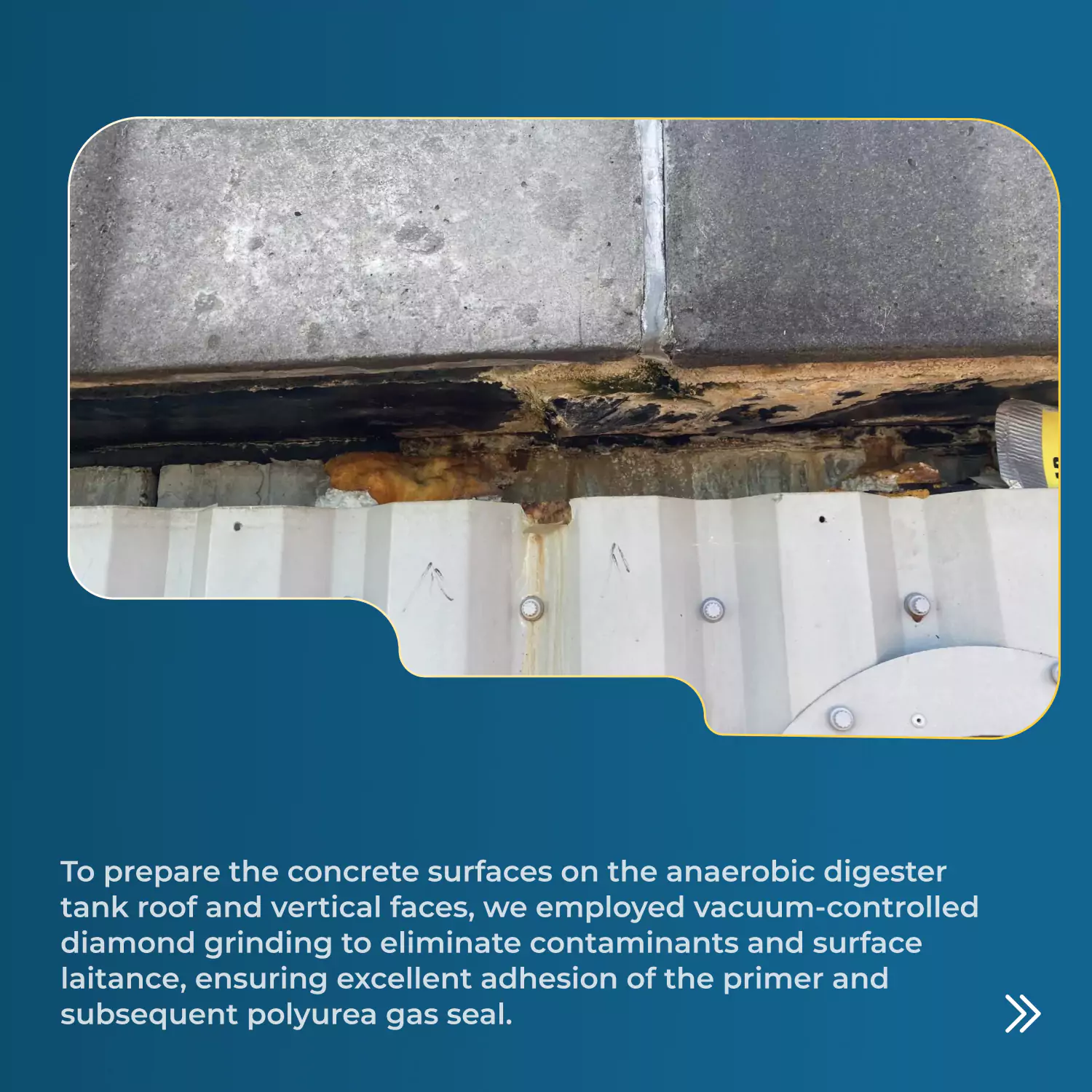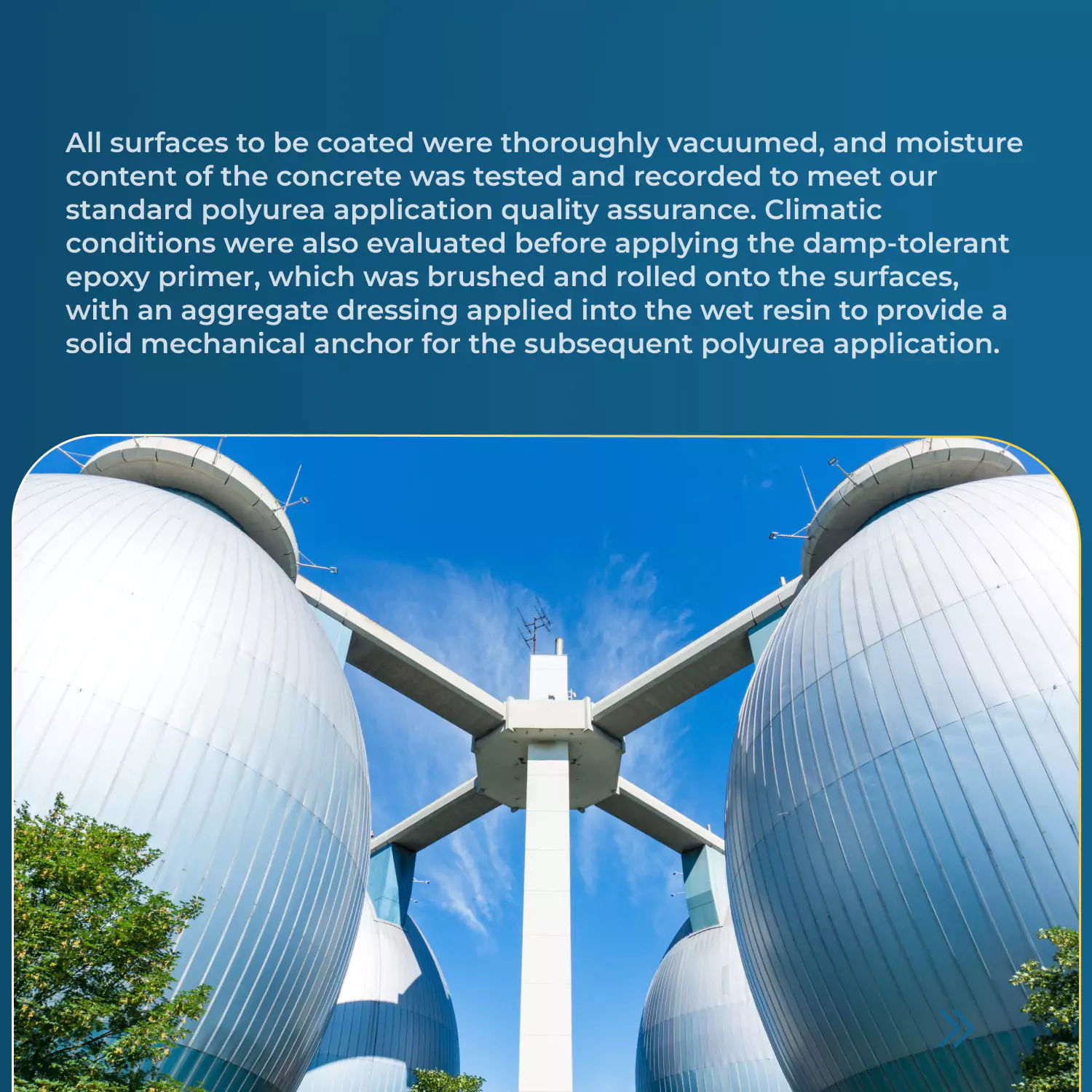PROJECT OVERVIEW: STOPPING THE ESCAPE OF DANGEROUS BIOGAS
A large international manufacturer of industrial storage containers sought ArmorThane’s assistance in sealing one of their anaerobic digester tanks. During a routine evaluation, inspectors discovered that the tank was releasing biogas, a mixture of mostly methane and carbon dioxide, along with trace amounts of other gases. One of these trace gases, hydrogen sulfide, poses a danger to both human health and equipment integrity because of its high toxicity and corrosive effects. In fact, sulfur staining—the formation of sulfur-based deposits due to corrosion—revealed the leak and prompted our client to take action. Beyond being dangerous, biogas is the intended reaction product of anaerobic digestion, so its escape into the environment was akin to financial loss and required a swift and effective solution.
THE APPLICATION PROCESS
To address our client’s concern and seal their anaerobic digester tank, we determined that getting the job done right required using a combination of our polyurea and polyurethane products along with an epoxy primer. To seal the existing leaks and prevent new ones from forming, we treated all roof-to-roof joints as well as the junctions between the circumferential wall of the tank and its roof. However, we first needed to prepare the tank’s concrete surfaces. For this, we used vacuum-controlled diamond grinding, which relies on diamond-embedded grinding discs rotating at high speeds to smooth a surface while an integrated high-powered vacuum captures any debris.
Once we cleaned and modified the surface, we applied the first layer of our system—a damp-tolerant epoxy primer with an added aggregate dressing. This created a strong anchor for adhesion and reduced the risk of surface moisture, amine blushing and blooming, or local climatic conditions compromising the bonding strength of subsequent layers. After applying the primer, we placed backing rods and used polyurethane jointing to fill all vulnerabilities, then shielded all untreated surfaces to protect them from overspray damage. Next, we applied the primary coating for this system, ArmorThane’s ArmorLiner polyurea, to a thickness of 2 mm. To confirm the quality of the resulting coating system, we performed spark testing, which detects miniature pinholes that, if left unaddressed, could become new avenues for biogas escape.
THE RESULTS
Our client couldn’t afford a delayed project start or significant downtime, so the ArmorThane team worked tirelessly through the weekend to minimize disruption and get their anaerobic digester back in service as quickly as possible. We met our project deadlines and delivered a high-performance coating system that restored their infrastructure and will prevent future gas leaks for up to several decades. Our client appreciated our dedication and flexibility, and we took pride in seeing our technology protect people, businesses, and the environment once again.
FREQUENTLY ASKED QUESTIONS
As their name suggests, biogas digesters produce biogas—a hazardous mixture of different gases, including hydrogen sulfide, that harms human health and corrodes the digester tank. If they’re not tightly sealed, oxygen can enter the tank to disrupt digestion, and biogas can leave the tank to put people, the environment, and on-site infrastructure in immediate danger.
Biogas, the primary product of anaerobic digestion, consists mainly of methane and carbon dioxide. However, the mixture also contains several other gases in smaller quantities, including hydrogen sulfide—a toxic and highly corrosive substance. If the tank isn’t airtight, it can leak this dangerous gas, leading to financial losses and acute health and safety risks.
Anaerobic digester tanks must remain airtight to produce biogas efficiently and prevent dangerous substances like hydrogen sulfide gas from escaping. Industrial-grade coatings like polyurea and polyurethane can seal these tanks, resisting corrosive substances and reliably reinforcing any vulnerabilities.
in conclusion
This case study shows how ArmorThane’s polyurea and polyurethane technology repairs and protects industrial containers like anaerobic digester tanks. If you’d like to see more examples of our high-performance protective coatings in action, we’ve published a series of case studies just like this one. As the world’s one-stop shop for everything polyurea and polyurethane, we do far more than seal primary containers—our formulations handle diverse applications in the toughest environments.
If you’re ready to start your next coatings project or want to learn more about our technology, give us a call or fill out our contact form. We’ve yet to face a problem we couldn’t solve or a challenge we couldn’t overcome—try us!
Case Details
Client Details
Center Enamel Co
Service Provided
Coated leaking areas of the digester tanks.
Project Timeline
5 Days spraying application,
Let Us Help You !
Looking for a specially trained and certified ArmorThane applicator in your area?
Call Us At :417-831-5090

